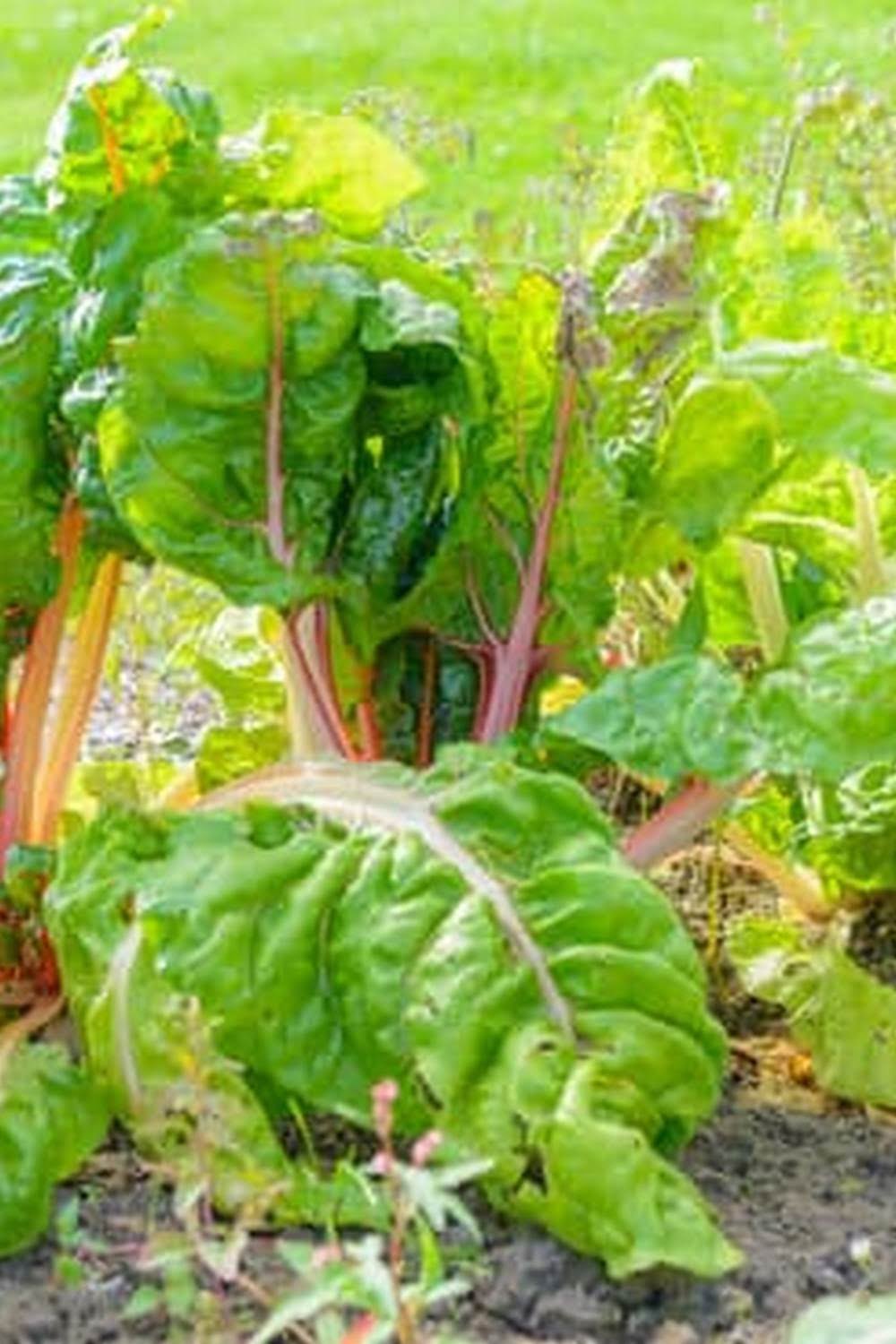Are you looking to start your own vegetable garden but don’t know where to begin? Look no further, as this article serves as the ultimate guide to vegetable gardening for beginners.
Before diving into the world of vegetable gardening, it’s essential to understand what you need to know before getting started. From selecting the right location for your garden based on sunlight, soil, and water requirements to choosing the best vegetables for beginners, this comprehensive guide will provide you with all the necessary information to kickstart your gardening journey.
Equipped with essential tools and equipment, beginner vegetable gardeners can learn how to plan and design their garden layout using techniques such as square foot gardening, raised beds, and vertical gardening. To ensure a successful harvest, we will also cover soil preparation techniques like soil testing, amending, and fertilizing tips.
With step-by-step instructions for planting and caring for your vegetables, along with maintenance tips on watering, weeding, and harvesting – this guide has got you covered at every stage of your vegetable gardening experience.
Selecting the Right Location for Your Vegetable Garden
When it comes to vegetable gardening, one of the most crucial factors for success is selecting the right location for your garden. Sunlight, soil quality, and water availability are key elements that can make or break your gardening efforts. Before you start digging in the dirt, take some time to assess your potential garden site to ensure that it meets the needs of your future vegetable plants.
First and foremost, sunlight is essential for the growth and development of most vegetables. Most vegetables require at least 6-8 hours of direct sunlight per day to thrive. When choosing a location for your vegetable garden, consider areas in your yard that receive ample sunlight throughout the day. Observe how the sun moves across your yard from morning to evening to determine the best spot for your garden beds.
In addition to sunlight, soil quality is another important factor to consider when selecting a location for your vegetable garden. Vegetables grow best in well-draining soil that is rich in organic matter. Conduct a soil test in your chosen garden area to determine its pH level and nutrient content. If necessary, amend your soil with compost, organic matter, or fertilizer to create an optimal growing environment for your vegetables.
Lastly, consider water availability when choosing a location for your vegetable garden. Make sure that your garden site has access to a water source, whether it be through a hose or irrigation system, to ensure that your plants receive adequate moisture throughout the growing season. By taking into account sunlight, soil quality, and water availability when selecting the right location for your vegetable garden, you are setting yourself up for success as a beginner gardener.
Essential Tools and Equipment for Beginner Vegetable Gardeners
When starting your journey into vegetable gardening, having the right tools and equipment is essential to ensure a successful and enjoyable experience. As a beginner, it may be overwhelming to know where to start in terms of what you will need for your garden. Here is a breakdown of the essential tools and equipment you will need to get started on your vegetable gardening adventure.
Garden Gloves
One of the most basic but crucial tools for any gardener, especially beginners, is a good pair of garden gloves. These will protect your hands from thorns, splinters, blisters, and any harmful substances that may be present in soil or plants. Look for durable gloves that fit well and provide adequate protection without compromising dexterity.
Hand Trowel
A hand trowel is another must-have tool for beginner vegetable gardeners. This small handheld tool is perfect for digging small holes for seedlings, transplanting young plants, weeding, and loosening soil. Choose a sturdy hand trowel with a comfortable handle that fits well in your hand for ease of use.
Garden Hoe
For larger-scale weeding and cultivating tasks, a garden hoe is essential. A good quality garden hoe can help you break up compacted soil, remove weeds efficiently, and shape planting beds. There are different types of hoes available, so choose one that best suits the size of your garden plot and your gardening needs.
With these essential tools in your arsenal, you’ll be well-equipped to tackle any tasks that come your way while establishing and maintaining your first vegetable garden as outlined in the ultimate guide to vegetable gardening for beginners.
Choosing the Best Vegetables for Your Garden
When it comes to starting your first vegetable garden, choosing the right vegetables to plant is crucial for success. As a beginner gardener, selecting easy-to-grow options can help you gain confidence and experience in gardening. Some of the best vegetables for beginners include tomatoes, zucchini, lettuce, radishes, and green beans. These vegetables are known for their resilience, adaptability, and relatively low maintenance requirements.
Tomatoes are a popular choice for beginner gardeners due to their versatility and abundant harvests. They thrive in sunny locations with well-drained soil and benefit from regular watering. Zucchini is another excellent option for beginners as these fast-growing plants produce an abundance of fruit with minimal effort. Lettuce is a great starter vegetable as it can be grown throughout the season and does well in containers or raised beds.
Radishes are perfect for beginners as they have a short growing season, making them ideal for quick results. Green beans are also beginner-friendly vegetables that can be grown easily from seeds directly in the garden. By choosing these easy-to-grow options, you can set yourself up for a successful and rewarding gardening experience while learning valuable skills along the way.
In addition to the mentioned vegetables, other beginner-friendly options include carrots, cucumbers, peppers, and herbs like basil and parsley. Experimenting with different varieties of vegetables can also add excitement to your gardening journey. Remember to consider your climate and local growing conditions when selecting vegetables for your garden to ensure their success. With these easy-to-grow options, you’ll be well on your way to enjoying a bountiful harvest from your first vegetable garden.
Planning and Designing Your Vegetable Garden Layout
Planning and designing the layout of your vegetable garden is a crucial step in ensuring a successful harvest. Whether you have limited space or a large backyard, utilizing techniques like square foot gardening, raised beds, and vertical gardening can maximize your yield and make maintenance easier for beginners.
- Square Foot Gardening: This method involves dividing your garden into square-foot sections to efficiently use space while reducing the need for weeding and watering. By carefully planning what to plant in each square foot, beginners can optimize their garden’s productivity. Some popular vegetables to grow using this method include lettuce, carrots, radishes, and herbs.
- Raised Beds: Raised beds are ideal for beginner vegetable gardeners as they provide better drainage, soil quality control, and warmer soil temperatures for early planting. Building raised beds can be as simple as using lumber or stacked bricks to create elevated planting areas that are easier to access without stepping on the soil, which can compact it over time.
- Vertical Gardening: When space is limited, vertical gardening allows you to grow vegetables upwards instead of outwards. This technique involves utilizing trellises, cages, or vertical structures to support climbing plants like tomatoes, cucumbers, beans, and peas. Vertical gardening not only saves space but also promotes better air circulation around plants to reduce disease risks.
By incorporating these planning and design methods into your vegetable garden layout, you can make the most of your available space while creating an organized and visually appealing garden. Experiment with different techniques to see what works best for your needs and preferences as a beginner vegetable gardener.
Preparing Your Soil for Planting
Soil preparation is a crucial step in ensuring a successful vegetable garden. Before planting your crops, it’s essential to understand the composition of your soil through soil testing. Testing your soil can reveal important information such as pH levels, nutrient deficiencies, and soil texture. You can utilize DIY soil test kits or send samples to a local extension office for analysis. Once you have the results, you can make informed decisions on how to amend your soil.
One common way to improve soil quality is through soil amendment. Adding organic matter like compost, aged manure, or shredded leaves can enrich the soil with essential nutrients, improve its structure, and enhance water retention. Incorporating these amendments into the soil before planting will provide a fertile environment for your vegetables to thrive. Additionally, consider using natural fertilizers like fish emulsion or seaweed extract to supplement the nutrients in your soil throughout the growing season.
Proper fertilization is another key aspect of preparing your soil for planting. Different vegetables have varying nutrient requirements, so it’s important to understand the needs of the crops you’re growing. Using a balanced fertilizer with equal parts nitrogen, phosphorus, and potassium can help promote healthy plant growth and development.
Consider applying fertilizers according to recommended rates and schedules to avoid overfeeding or underfeeding your plants. By taking the time to properly prepare your soil through testing, amending, and fertilizing, you’ll be setting the foundation for a productive and thriving vegetable garden.
| Soil Preparation Tips | Key Points |
|---|---|
| Soil Testing | Reveals pH levels, nutrient deficiencies, and texture |
| Soil Amendment | Add organic matter like compost or aged manure for improved fertility |
| Fertilizing Tips | Use balanced fertilizers with equal parts N-P-K according to plant requirements |
Planting and Caring for Your Vegetables
Transplanting your seedlings into your garden is a crucial aspect of vegetable gardening. Make sure to harden off indoor-started plants by gradually exposing them to outdoor conditions before transplanting them into the garden. When planting, ensure that you’re following spacing recommendations on the plant labels to allow for proper growth and airflow. Water your transplants immediately after planting to help them establish their roots in their new environment.
Pest management is another important aspect of caring for your vegetable garden. Keep an eye out for common pests such as aphids, caterpillars, and slugs, which can damage your plants if left unchecked. One natural pest control method is attracting beneficial insects like ladybugs and lacewings to your garden with companion plants like dill and yarrow.
Regularly inspect your plants for any signs of pests or diseases and take action promptly to prevent any issues from escalating. By following these step-by-step instructions for seed starting, transplanting, and pest management, you’ll be on your way to a successful vegetable garden as a beginner gardener.
Maintaining Your Vegetable Garden
Maintaining a vegetable garden is crucial to ensure the success of your plants and ultimately, your harvest. Proper watering, weeding, and harvesting techniques are essential for the health and productivity of your vegetable garden. In this section, we will discuss some tips and tricks to help you maintain your garden throughout the growing season.
Watering Your Vegetable Garden
One of the most important aspects of maintaining a healthy vegetable garden is proper watering. Vegetables need consistent moisture to thrive, but overwatering can lead to root rot and other issues. It is recommended to water in the morning to allow the leaves to dry before nightfall, reducing the risk of fungal diseases.
The frequency of watering will depend on factors such as weather conditions, soil type, and plant size. Pay attention to the moisture levels in the soil and adjust your watering schedule accordingly.
Weeding Your Vegetable Garden
Weeds compete with your vegetables for water, nutrients, and sunlight, so it’s important to stay on top of weed control in your garden. Regularly inspect your garden beds for weeds and promptly remove them before they become established. Mulching around your plants can help suppress weed growth while also retaining moisture in the soil. Hand-weeding or using a hoe are effective methods for weed removal without disturbing your vegetable plants’ roots.
Harvesting Your Vegetables
Knowing when and how to harvest your vegetables is essential for enjoying fresh produce from your garden. Different vegetables have specific harvest times based on maturity indicators like size, color, or firmness. Use pruners or scissors to harvest fruits or vegetables instead of pulling them off branches or stems which could damage plants.
Regular harvesting encourages continuous production throughout the season and prevents crops from becoming overripe or past their peak flavor. Enjoy the fruits of your labor by incorporating freshly harvested vegetables into meals right away or preserving them through freezing or canning for later use.
By following these tips for watering, weeding, and harvesting in your vegetable garden, you will be well on your way to maintaining a successful garden that provides you with bountiful harvests all season long while keeping pests at bay. With patience and dedication, you’ll soon become a seasoned gardener capable of growing an abundance of fresh produce right at home.
Troubleshooting Common Issues in Vegetable Gardening
When embarking on your vegetable gardening journey, it’s essential to be prepared for potential challenges that may arise along the way. Dealing with diseases, pests, and environmental stress is a common concern for beginner gardeners but armed with the right knowledge and tools, you can effectively troubleshoot these issues to ensure a successful harvest.
One of the most common problems in vegetable gardening is diseases that can affect your plants. To prevent and manage these issues, it’s crucial to practice good garden hygiene by keeping your plants well-spaced, avoiding overhead watering, and promptly removing any infected plant material.
Additionally, rotating your crops each season can help minimize the spread of diseases in your garden. Familiarize yourself with common plant diseases such as powdery mildew, blight, and root rot to identify them early and take appropriate action.
In addition to diseases, pests can also wreak havoc on your vegetable garden if left unchecked. Common garden pests include aphids, caterpillars, slugs, and beetles which can damage or even destroy your plants if not controlled. Utilizing natural predators like ladybugs or practicing companion planting with pest-repelling herbs can help deter these unwanted visitors.
If pest infestations become severe, consider using organic pesticides as a last resort to protect your crops without harming beneficial insects. By staying vigilant and proactive in monitoring for signs of pest activity, you can take preemptive measures to safeguard your vegetable garden.
Resources and Further Reading for Beginner Vegetable Gardeners
In conclusion, starting a vegetable garden as a beginner can be a rewarding and fulfilling experience. By following the steps outlined in this comprehensive guide, you can set yourself up for success and enjoy the many benefits of growing your own fresh produce. From selecting the right location to choosing the best vegetables for your garden and maintaining it properly, each step plays a crucial role in creating a thriving garden.
One of the key factors in successful vegetable gardening is access to reliable resources and further reading materials. Whether you prefer books, online guides, or joining gardening forums and communities, there are plenty of resources available to help you expand your knowledge and skills. These resources can provide valuable insights, tips, and advice from experienced gardeners that can help you troubleshoot common issues and improve your gardening techniques.
Frequently Asked Questions
What Is the Easiest Vegetable Garden for Beginners?
The easiest vegetable garden for beginners is often a container garden. This requires less space, time, and effort compared to traditional in-ground gardens. Containers can be placed on patios, balconies, or even indoors.
What Vegetables Are Easiest to Grow for Beginners?
Vegetables that are easiest to grow for beginners include lettuce, radishes, tomatoes, and bush beans. These plants are relatively low-maintenance and can thrive with minimal care. They are also quick to mature, giving beginners a sense of accomplishment.
What Is the Best Layout for a Vegetable Garden?
The best layout for a vegetable garden depends on factors like available space, sunlight exposure, and personal preference. Some common layouts include raised beds, square foot gardening, or traditional rows. It’s essential to consider easy access for watering and harvesting when designing a layout.

If you’re looking to get into vegetable gardening, or are just looking for some tips on how to make your current garden better, then you’ve come to the right place! My name is Ethel and I have been gardening for years. In this blog, I’m going to share with you some of my best tips on how to create a successful vegetable garden.





